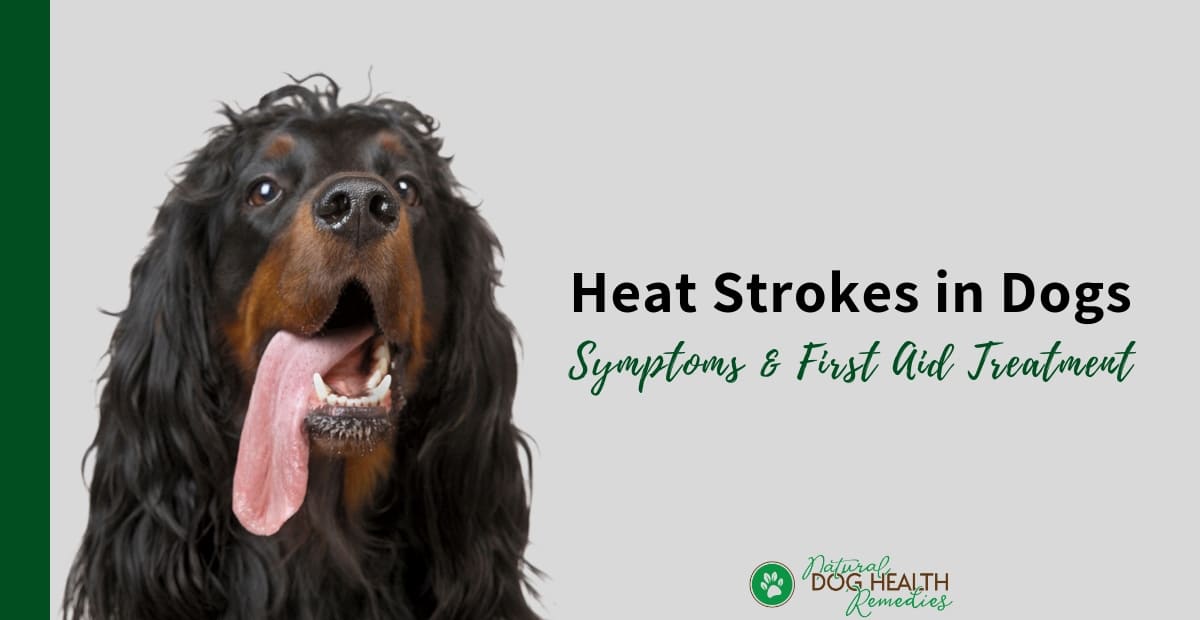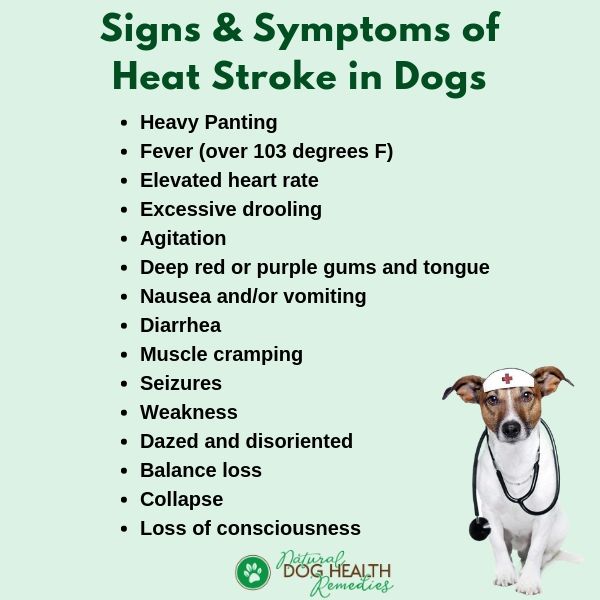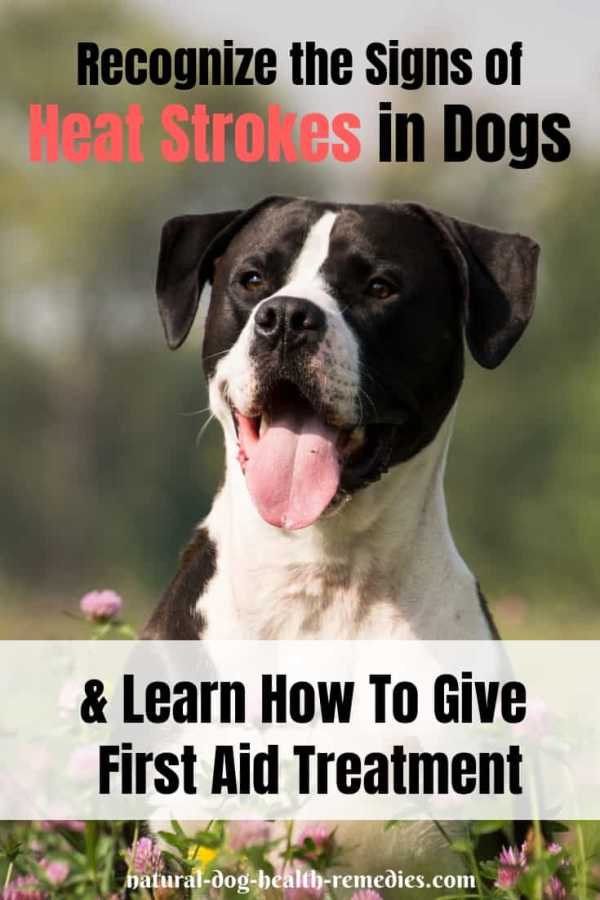Dog Heat Stroke
(FTC Disclosure: If you make a purchase via a link on this page, I may receive a small commission, at no added cost to you.)

Overview
Heat stroke can cause brain damage in dogs and even death in a short time. It is therefore important to know the symptoms and how to take quick action in case your dog has a heat stroke.
All dogs can suffer from heat stroke, but the following types of dogs are at greater risks:
- Dogs weakened by health problems or those that are on medication.
- Older dogs.
- Puppies.
- Obese dogs.
- Dogs with a thick coat.
- Dogs with heart or respiratory problems.
- Brachycephalic dogs (dogs with a "pushed-in" face) like pugs, bulldogs and Boston terriers.
What Causes Heat Stroke in Dogs?
Living cells have temperature tolerant limits, and if the temperature goes beyond the limits, the cells break down, cease to function and eventually die.
In dogs, the cells break down at around 106.7°F (41.5°C). While we can regulate our body temperature by sweating, our dogs cannot as they do not have as many sweat glands as we do. (The only few sweat glands that they have are on the pads of their feet and on their noses.)
Dog just mainly lose water through their mouths. That's why when they are hot, dogs pant.
When a dog is confined to a small space with high temperature and humidity (such as in a car on a hot summer day), the dog's body will begin to acquire heat from the environment far quicker than its ability to dissipate the heat.
On a hot summer day, if a dog is left in a parked car, even with the windows open, the temperature in the car can be as high as 160°F!
Within minutes, the dog's body temperature can rise rapidly under this condition to over 104°F, when he will start panting heavily. (A dog's normal body temperature is somewhere between 100.5°F and 101.5°F.)
If no action is being taken to cool him down, his body temperature can rise to a dangerous level (up to 106°F or higher), when heatstroke occurs and brain damage (sometimes death) may occur rapidly as well.
What are the Symptoms of Heat Stroke in a Dog?
As mentioned above, the only mechanism for dogs to quickly reduce heat is panting. If a dog is overheated, the first sign is heavy panting.
Other warning signs of dog heat stroke tend to follow a progression from mild to severe, as follows:
- Body temperature over 103°F
- Elevated heart rate
- Excessive drooling
- Agitation
- Deep red or purple gums and tongue
- Nausea and/or vomiting
- Diarrhea
- Muscle cramping
- Seizures
- Weakness
- Dazed and disoriented
- Balance loss
- Collapse
- Loss of consciousness
- Death
If your dog has been out in the heat, and is showing signs of heat stroke, take the dog to the veterinarian without delay.

First Aid Treatment of Dog Heat Stroke
Heatstroke in dogs is an emergency. Immediate veterinary care is best but time is also critical, since brain damage can occur in a matter of a few minutes.
If your dog shows signs of heat stroke, immediately start cooling down your dog.
Rapid cooling is essential. Use a garden hose, for example, to splash some water on the overheated dog.
Do not, however, cool her down by using ice water or even very cold water. This may worsen the problem because the cold water may cause the surface blood vessels to constrict, reducing the heat transfer out of the body.
Also, extremely cold water can cause the dog to shiver which in turn can dramatically increase body heat - the very last thing we want to happen!
Be sure also to let her drink some water to avoid dehydration. Move her to a cool place if possible. If you are inside, turn on the air-conditioner or fan to help bring down your dog's body temperature.
If your dog's body temperature is around 103°F, continue to monitor her condition and bring down her temperature. Then take her to the vet as soon as possible to make sure that no internal damage has occurred.
If, however, your dog's body temperature is over 105°F, immediately after wetting the dog completely with cool water and spraying cool water on her neck and groin, take her to the emergency veterinary clinic.
Cold Compresses For Dog Heat Stroke
After you have sprayed cold water on your dog's body to cool her down, you can continue to bring her body temperature down by using peppermint cold compresses - peppermint has a cooling effect:
- Brew a strong peppermint tea (use at least 3-4 teabags, or 2-3 tablespoons of dried peppermint). To cool the tea quickly, pour it over ice cubes.
- Alternatively, add 2 or 3 drops of pure peppermint essential oil to a bowl of cold water.
- Soak several pieces of cloth and wring them just until they stop dripping.
- Apply the compresses to the dog's head, neck, legs, and groin area.
- When the compresses become warm to body temperature, soak them again in the peppermint tea, and repeat for 15-20 minutes.
Prevention of Dog Heat Stroke
 To prevent your dog from getting heat stroke, keep in mind the following:
To prevent your dog from getting heat stroke, keep in mind the following:
- Never leave your dog in a car with the windows closed, even if the car is parked in the shade.
- Avoid exercising your dog excessively in the summer. Take frequent breaks and get your dog to drink plenty of water.
- If your dog stays outdoors most of the time, be sure to provide shade and plenty of water, and provide cooler surfaces for your dog to lie on, such as mats, grass, or wooden planking.
- If your dog is a Brachycephalic breed dog, or if your dog has breathing problems, keep him indoors with the fan or air-conditioner on during the hottest time of the day.
A Cooling Vest to Prevent Heat Stroke
Ruff Wear Swamp Cooler Cooling Vest for Dogs
This amazing cooling vest has three layers to maximize cooling effects:
- The top air-mesh layer facilitates evaporation, thereby releasing heat.
- The middle layer absorbs and stores the cooling water.
- The bottom layer cools the dog.
If you live in a hot place with an active dog who enjoys the outdoors, this cooling vest is a must!

C.J. Puotinen, Natural Remedies for Dogs and Cats (Keats Publishing, 1999).
R.H. Pitcairn, The Complete Guide to Natural Health for Dogs and Cats (Rodale, 2005).





